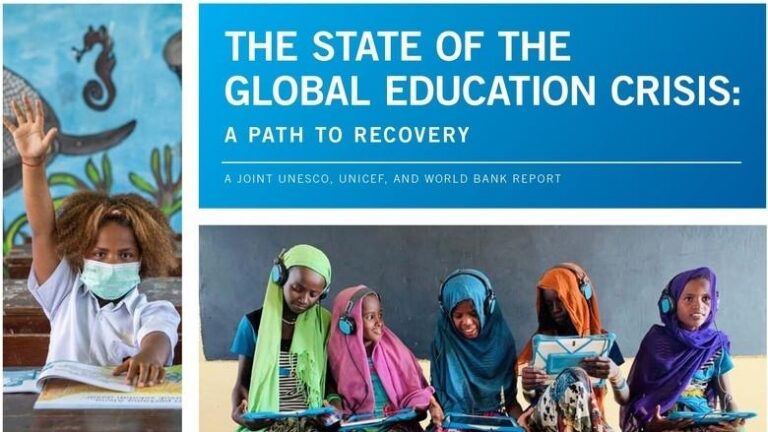As the world grapples with unprecedented challenges, UNICEF USA has issued a stark warning about a looming global education crisis threatening millions of children’s futures. Disruptions from conflict, poverty, and the lingering impacts of the pandemic have pushed access to quality education to a breaking point, leaving a generation at risk of being left behind. This article explores UNICEF USA’s urgent call to action, highlighting the deepening disparities and the critical need for coordinated efforts to ensure that every child can return to the classroom and build a path toward a brighter tomorrow.
Global Education Crisis Demands Immediate International Attention
The world faces an unprecedented challenge as millions of children remain out of school, unable to access basic education due to conflict, poverty, and environmental crises. The ripple effect threatens to deepen global inequalities, leaving future generations ill-equipped to contribute to social and economic development. Educational disruption is not confined to one region but spans continents, requiring urgent policy reforms and international collaboration to reverse the current downward trend.
Key issues compounding this crisis include:
- Insufficient funding for schools and teacher training
- Lack of safe learning environments amid humanitarian emergencies
- Barriers for girls and marginalized communities
- Digital divide limiting remote education access
| Region | Children out of school (millions) | Primary cause |
|---|---|---|
| Sub-Saharan Africa | 30 | Conflict and poverty |
| South Asia | 20 | Gender inequality |
| Middle East | 10 | Displacement from conflict |
Barriers to Learning in Conflict and Poverty-Stricken Regions
In regions riddled with conflict and entrenched poverty, the quest for education is hindered by an array of formidable obstacles that threaten to perpetuate cycles of disenfranchisement. The destruction of schools, insecurity during commutes, and the displacement of families drastically reduce children’s access to consistent learning environments. Beyond physical barriers, psychological trauma inflicted by violence impairs cognitive development, making it difficult for learners to engage productively in their studies. Additionally, economic hardships force many children into labor or early marriage, diverting them from education altogether.
Key challenges include:
- Infrastructure breakdown: Schools damaged or repurposed as shelters during crises.
- Safety threats: Persistent violence deters attendance for both students and educators.
- Resource scarcity: Shortages in learning materials, trained teachers, and supportive services.
- Socioeconomic pressures: Families prioritizing survival over education due to poverty.
| Barrier | Impact on Education | Estimated % of Affected Children |
|---|---|---|
| School Closures | Interruption of learning | 40% |
| Displacement | Lack of stable schooling | 30% |
| Child Labor | Early dropout | 25% |
| Psychological Trauma | Reduced cognitive function | 50% |
UNICEF USA Calls for Increased Funding and Policy Reforms
UNICEF USA urgently advocates for a substantial increase in funding to address the escalating global education crisis, emphasizing that millions of children remain deprived of basic learning opportunities due to conflict, poverty, and natural disasters. The organization calls on policymakers to implement reforms that not only expand access but also improve the quality and inclusivity of education systems worldwide. By spotlighting the disproportionate impact on marginalized communities, UNICEF USA stresses the need for targeted investments in infrastructure, teacher training, and digital learning tools to bridge widening educational gaps.
Among the proposed policy changes, UNICEF USA highlights several critical priorities:
- Guaranteeing universal access to free, quality education by removing economic and social barriers
- Enhancing education resilience in crisis-affected regions through adaptive and flexible learning models
- Strengthening collaboration between governments, NGOs, and the private sector to amplify resource mobilization
- Advancing data-driven strategies to monitor progress and address disparities effectively
| Funding Area | Current Status | Requested Increase |
|---|---|---|
| School Infrastructure | $500M | $1.2B |
| Teacher Training | $300M | $800M |
| Digital Learning Access | $200M | $600M |
Innovative Solutions to Bridge the Global Education Gap
Addressing the staggering educational disparities requires bold strategies that harness technology and community-centric approaches. Digital classrooms equipped with low-cost tablets and offline content are revolutionizing access for children in remote areas. Additionally, localized teacher training programs empower educators to tailor curricula that respect cultural diversity while meeting global standards. These initiatives emphasize resilience, ensuring learning continues amidst economic or environmental crises.
Key innovations driving change include:
- Mobile learning hubs that travel to underserved communities
- Adaptive learning software personalized to student needs
- Community mentorship networks linking youth with local role models
| Innovation | Impact | Regions Benefited |
|---|---|---|
| Offline Digital Libraries | Expanded resources in areas with no internet | Sub-Saharan Africa, Southeast Asia |
| Micro-Credentialing | Recognizes skills beyond formal schooling | Latin America, South Asia |
| Community Schools | Inclusive learning spaces managed locally | Rural areas worldwide |
Final Thoughts
As the global education crisis persists, the call to action from UNICEF USA grows increasingly urgent. Ensuring every child has access to quality education is not just a moral imperative but a foundational step towards building a more equitable and prosperous world. Without swift and sustained intervention, millions of young lives risk being left behind, their potential unheard and unrealized. The time to sound the alarm is now‚ÄĒto galvanize policymakers, communities, and individuals alike to prioritize education as the key to a brighter, more inclusive future.




